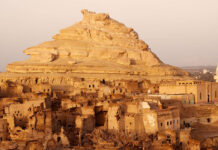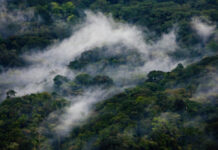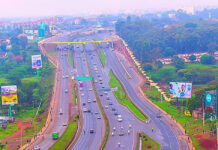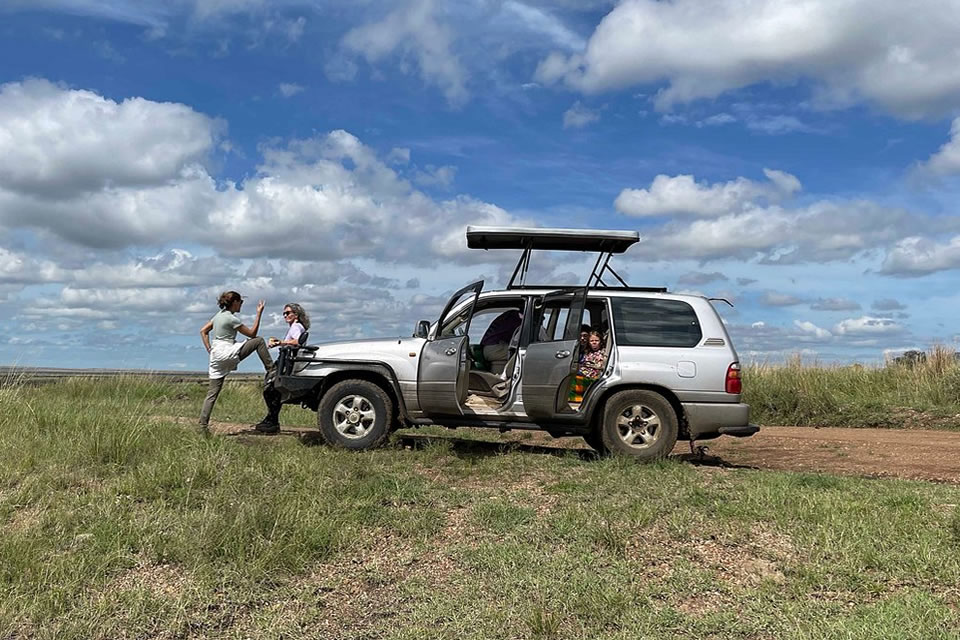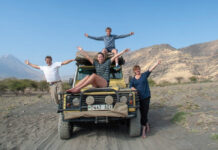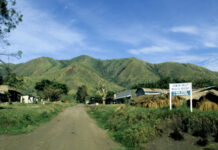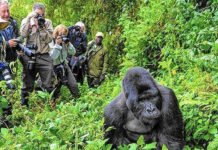Driving in Uganda is interesting, a bit more challenging than other East Africa and Southern Africa countries. By East African standards, Uganda major roads are generally in good condition. Surfaced roads radiate out from Kampala, running east to bigger towns like Jinja, Busia, Mbarara Tororo, Mbale and Soroti, south to Entebbe, southwest to Masaka, northwest. If you’re planning your Uganda safari trip and hope to rent a 4×4 car to drive yourself, we have put together a comprehensive guide to self-drive in Uganda. So go ahead and start planning your once-in-a-lifetime Pearl of Africa expedition.
With time to experience Uganda, the smiley countryside, and the vistas of the Kabale highway, a self-drive along the country’s western roads is the definitive road Uganda safari road trip. Then for the ultimate finish, the drive culminates with a few days on safari.
For wildlife lovers, there is the BIG 5, primates the endless list of mammals and birds to see. For lovers of cultures, there’re country homes, communities, and villages untouched by modernity. There are stretches of road that pass sweeping plantations and travel over dramatic mountain passes for those who love driving through the open countryside.
Despite the above, Uganda’s unsurfaced roads tend to be very variable from one season to the next, with conditions likely to be most tricky during the rains. Even in this generalization, an isolated downpour can do major damage to a road that was in perfectly good condition a day earlier.
Things to look out of on a self-drive in Uganda
- You definitely need to be a defensive driver in circumstances when buses and minibus-taxis are around as their drivers are crazy. These are now the main hazard on Ugandan roads aside from unexpected potholes. Minibus-taxi drivers in particular have long been given to overtaking on blind corners and do not mind of speed limits.
- You will be overtaken by big buses carrying over 70 passengers travelling at excessive speeds, oncoming traffic appears to be heading straight at you.
- Keep an eye in the rear-view driving mirror and if necessary pull off the road in advance to let the closing loony pass.
- Most roads encounter a lot of traffic jam especially in the rash hours so balance your driving time to do away with this.
- Driving at night can drive you mad because some Ugandans have this habit of driving without lights. The reality is you can buy a license here.
- You will meet lots of very friendly and helpful people. If you are unfortunate enough to have a puncture remember to get out of the way of the rush of local people wanting to help change the wheel for you.
- Drivers in Uganda are very aggressive and keep you on the edge of your seat. In Uganda, driving in the city is much more intense than in the rural areas which do not experience a lot of congestion and traffic jam.
- If you get a Uganda car rental from a reputable car rental company, you probably won’t have any breakdown problems, fuel is available all around the country and there might be an occasional roadblock but you will probably be waved straight through if you have the required and necessary documents though they might ask what you have in the back.
- Fuel is expensive in Uganda – the equivalent of around US$1.4 per litre for petrol and slightly less for diesel. If you are arriving overland its worth stocking up before you enter the country.
- You must have the following documents when driving in Uganda.This will make you have a soft and smooth drive while on the Ugandan roads. – The vehicle registration book (a photocopy is acceptable; ensure it’s a recent one with the most recent vehicle license entry recorded on the back page); -A minimum statutory Third Party Insurance Coverage Certificate – sticker and a driving licence – most reputable agencies hire out fully comprehensive insurance for cars taken on self-drive in Uganda.
- License – Your own domestic license is acceptable for up to three months. After three months of your stay in Uganda, you should get Ugandan license.
- Speed Limits: The speed of 80k/h in the open road would be comfortable without being over cautious, and it’s not a bad idea to slow down and cover the brake in the face of oncoming traffic.
Road Network
Getting to the edge of Kampala is not difficult, though insane traffic volume, including trucks, inevitably slows speeds as you approach the metropolis during peak hours.
The long and bothersome process of getting from one side of the city to the other eased in October 2008 with a 15km Northern Bypass opening. The Bypass links the Fort Portal and Mbarara roads, in the west, to Jinja roads in the east. In June 2019, the opening of a 51km Entebbe Express Highway, linking Kampala and the Northern Bypass to Entebbe International Airport.
For instance, most other roads in Uganda, from Fort Portal or Masindi to Hoima and Masindi to Murchison Falls — are newly surfaced.
Winding Roads of Western Uganda
Other roads like Kisoro to Bwindi trailheads are not surfaced. However, unsurfaced roads tend to vary from one season to the next, with conditions likely to be most tricky during the rains and least so towards the end of the dry season. Even within this generalization, an isolated downpour can do significant damage to a road that was in excellent condition a day earlier. At the same time, the arrival of a grader can transform a pot-holed 4×4 track into a road navigable by any saloon car.
The type of soil is also a significant factor in how prone any given road is to deterioration. In wet conditions, one should always be conscious that firm soil or gravel can give way abruptly to a mushy depression or a black cotton-soil quagmire.
Put simply, advice in this guide regarding road conditions is of necessity a snapshot of conditions today and should not be taken as gospel. When in doubt, ask local advice — if minibus-taxis are getting through, so should any 4×4, so the taxi station is always an excellent place to seek on-the-ground information.
Speed bumps
A peculiarly African road hazard — one frequently taken to unnecessary extremes in Uganda — is the giant sleeping traffic man or ‘speed bump’ or hump as it’s known locally. A lethal bump might be signposted in advance, it might be painted in black-and-white stripes, or it might simply rear like a macadamized wave a full 30cm or so above the road without warning.
Despite some loosely on occasions, Ugandans follow the British custom of driving on the left side of the road. The gaffer speed limit on the open road is 80km/h and 30km/h in built-up areas unless otherwise indicated.
The best time to visit Uganda
The best time to visit Uganda is during its two dry seasons: between December and February, and between June and August, when conditions are particularly good for trekking to see mountain gorillas and chimpanzees.
Game spotting in national parks is also good at this time, as well as between February and March. Large numbers of wildlife can be seen at waterholes from September through to early October.
Temperatures barely change throughout the seasons, sitting around 24°C to 30°C, so you can visit Uganda all year round. The country is also fabulous for bird spotting at any time of year.


